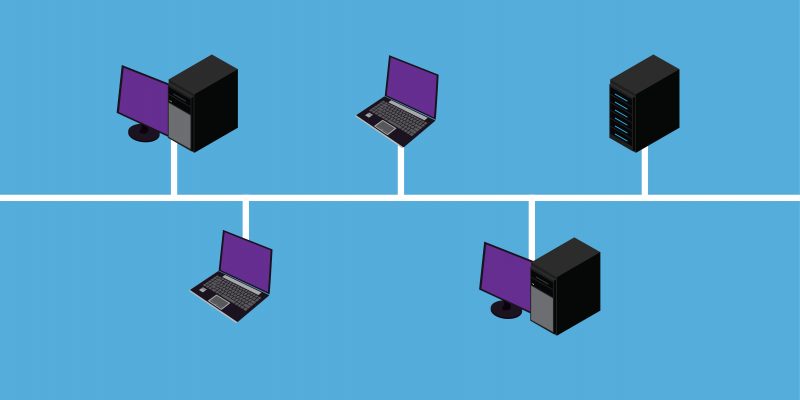We explain what computer networks are and what types exist. Also, its elements and what a network topology is.

What are computer networks?
Computer networks, data communications networks or computer networks are understood to be a number of computer systems connected to each other through a series of wired or wireless devices thanks to which they can share information in data packets, transmitted by electrical impulses, electromagnetic waves or any other physical means.
Computer networks are no different in their exchange logic from other known communication processes: they have a sender, a receiver and a message, as well as a medium through which to transmit it and a series of codes or protocols to guarantee its understanding. . Of course, in this case, those who send and receive messages are automated computer systems.
When you have networked computers, it is possible to create internal communication, sharing an Internet access point or managing peripherals (printers, scanners, etc.), as well as the fast sending of data and files without the need for secondary storage devices. This is achieved thanks to a series of communication standards, which “translate” the processes of the various computers into the same language (the most common of them is TCP/IP).
In today's hypercomputerized world, computer networks They are present in almost all everyday areas especially those linked to bureaucracy or resource administration. In fact, it could be argued that the Internet, which we access from computers, cell phones and other devices, is nothing more than an immense global computer network.
Types of computer networks

Commonly, computer networks are classified according to their size into:
- LAN networks Acronyms of Local TOrea network (in English: “Local Area Network”), these are smaller networks, such as those that exist in a phone shop or cyber cafe, or an apartment.
- MAN networks Acronyms of Metropolitan TOrea network (in English: “Metropolitan Area Network”) designates networks of intermediate size, such as those used on university campuses or in large libraries or companies, which connect different areas far from each other.
- WAN networks. Acronyms of Wide TOrea network (in English: “Wide Area Network”), refers to networks of greater size and scope, such as the global network of networks, the Internet.
They are also usually classified according to the technology with which the computers are connected, as follows:
- Guided Media Networks Those that intertwine computers through some physical cable system, such as twisted pair, coaxial cable or optical fiber.
- Unguided media networks. They connect their computers through dispersed and area-range media, such as radio waves, infrared, or microwaves.
There are other possible network classifications, based on its topology, its functional relationship or directionality of the data.
Elements of a computer network
Usually in computer networks the following elements are present:
- Servers In a network, computers do not always have the same hierarchy or functions. The servers are those that process the data flow, serving all the other computers on the network (“serving them”, hence the name) and centralizing control of the network.
- Clients or workstations This is the name given to computers that are not servers, but are part of the network and allow users to access it, using the resources managed by the server.
- Transmission media. This is the name given to the wiring or electromagnetic waves, as the case may be, that allow the transmission of information.
- Hardware elements. Those pieces that allow the physical establishment of the network, such as the network cards in each computer, the modems and routers that support data transmission, or the repeater antennas that extend the connection (if wireless).
- Software elements. Finally, there are the programs required to manage and operate the communications hardware, which includes the Network Operating System (NOS). Network Operating System), which in addition to maintaining the operation of the network, provides antivirus and firewall support; and communication protocols (such as TCP and IP) that allow machines to “speak” the same language.
What is network topology?

Network topology is the interconnection model according to which the relationships between clients and servers are arranged. There are three network topology models:
- Linear or bus The server is at the head of the network and the clients are distributed along a line from it, the only communication channel being a single one, called bus either backbone (“backbone”).
- In star The server is in the center of the network and each client has a unique connection, so any communication between machines must go through it first.
- In a ring or circular All the machines are connected in a circle, in contact with the closest ones and on equal terms, although the server still has its hierarchy.





